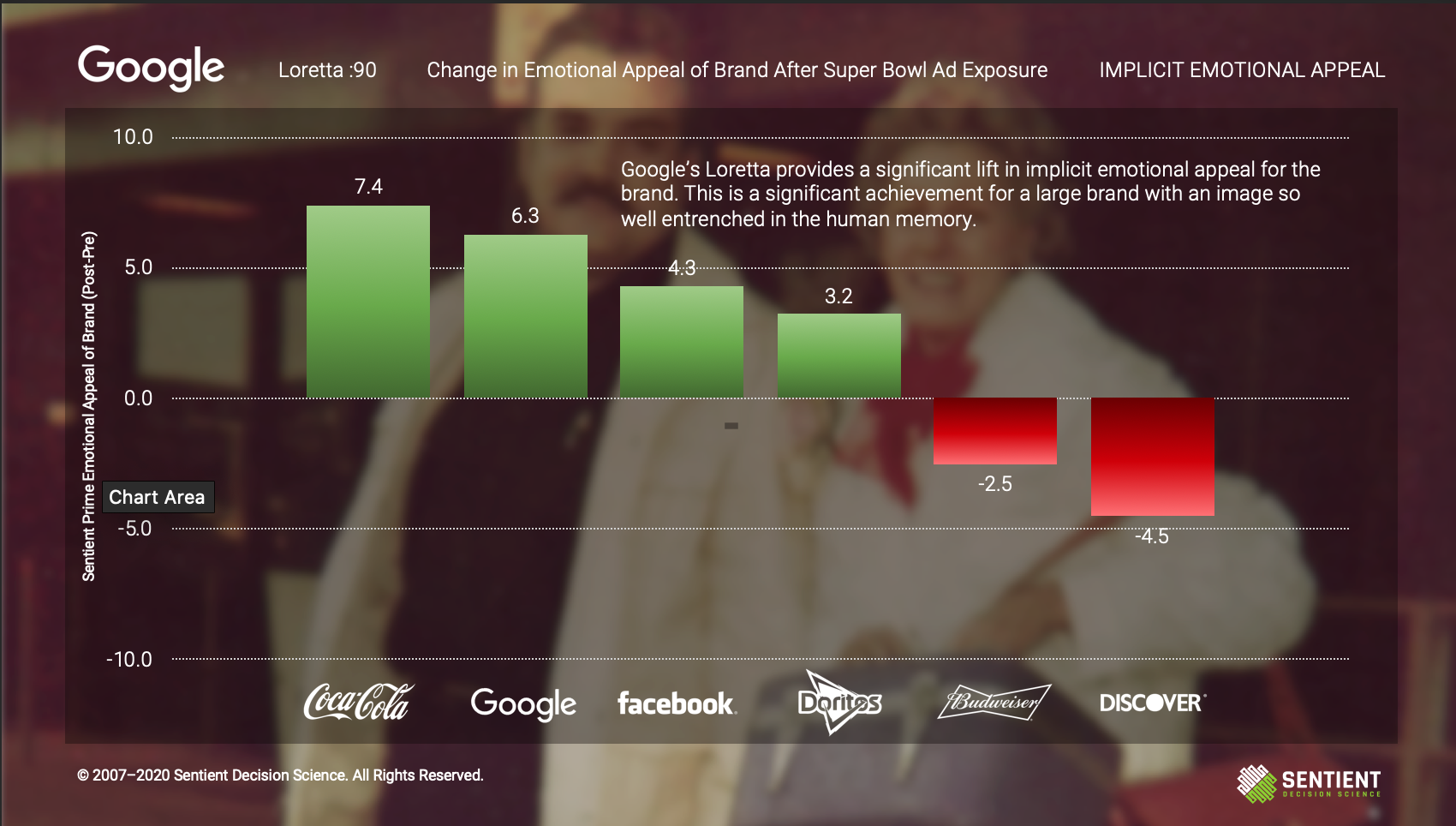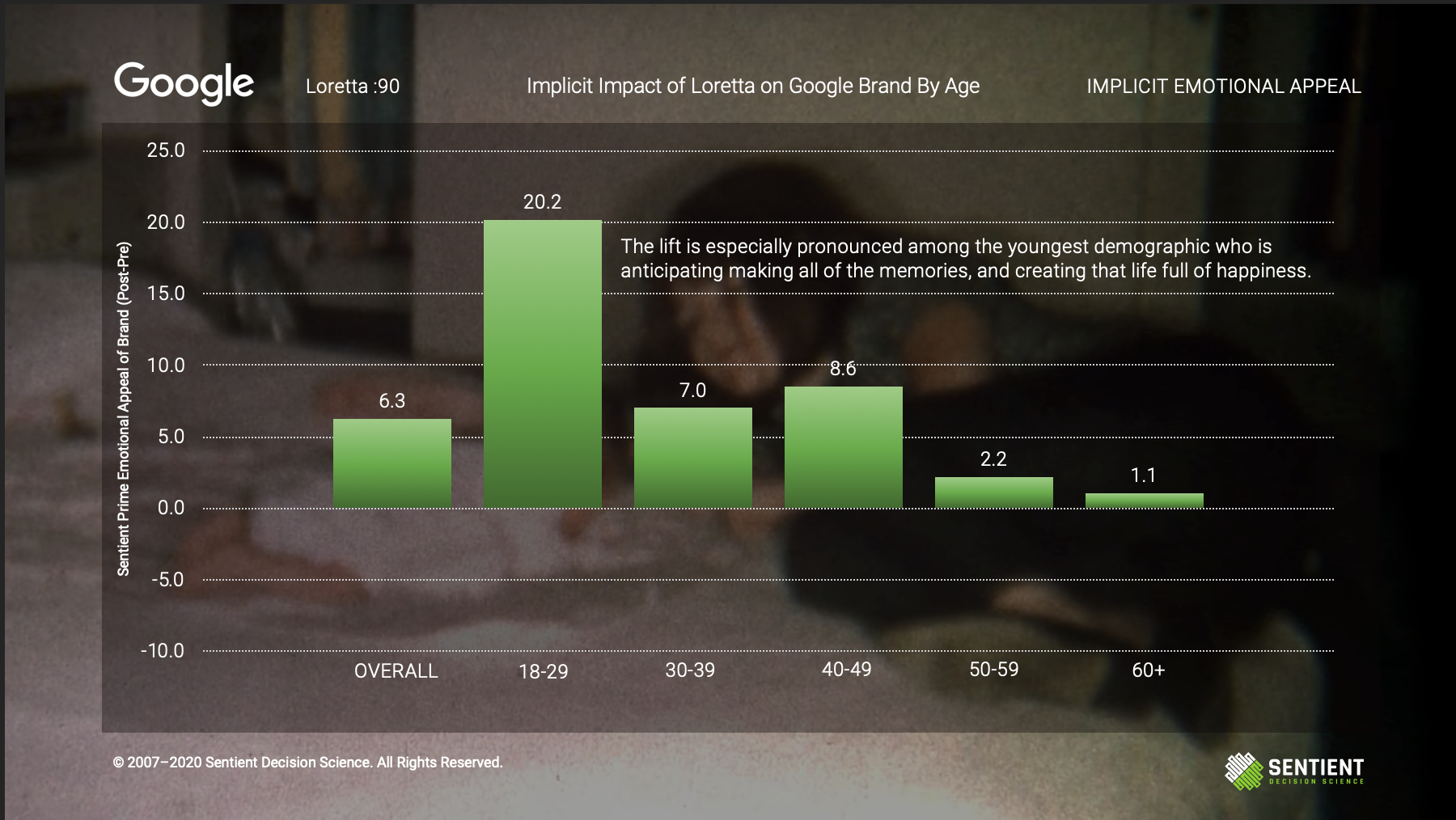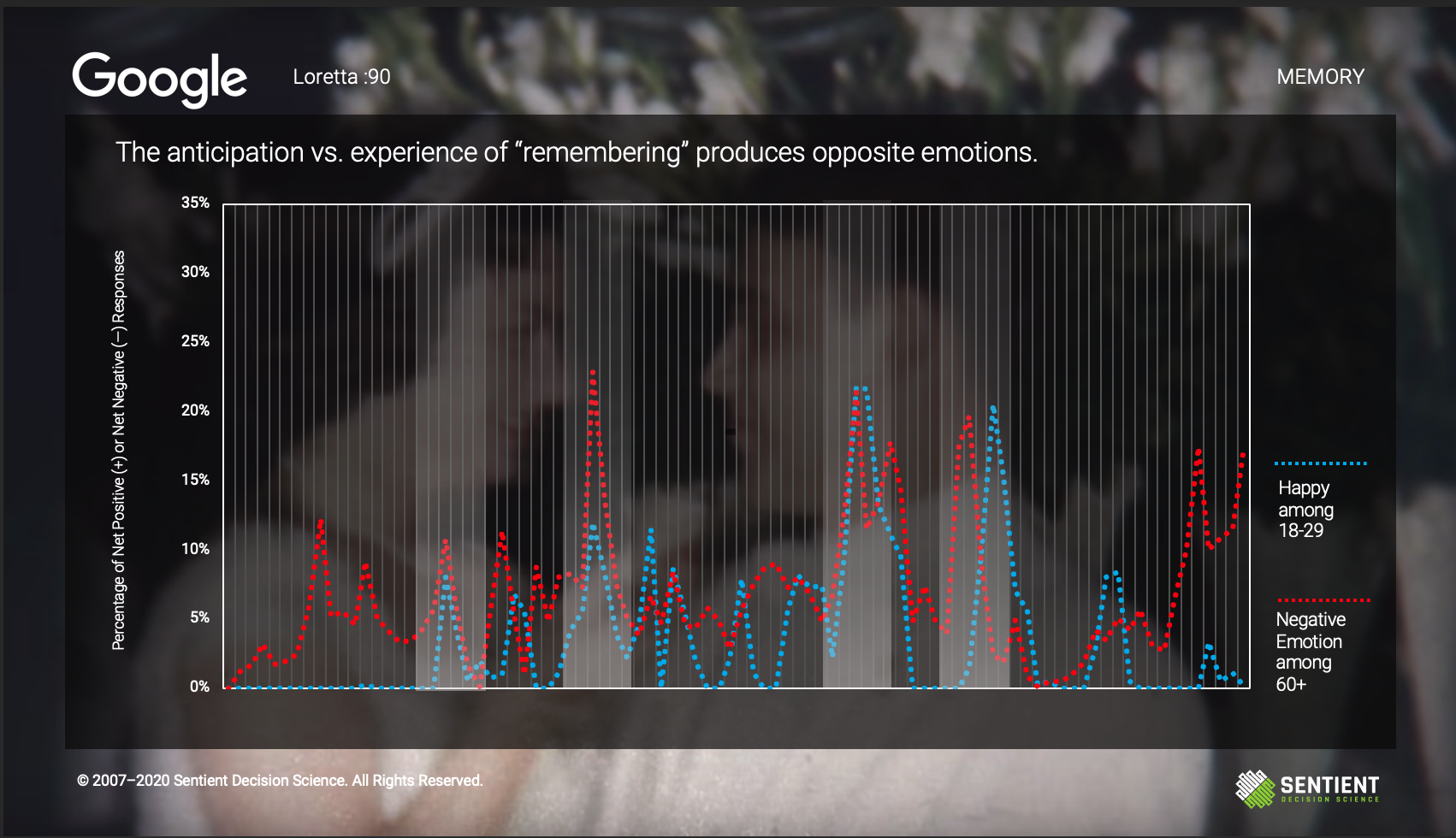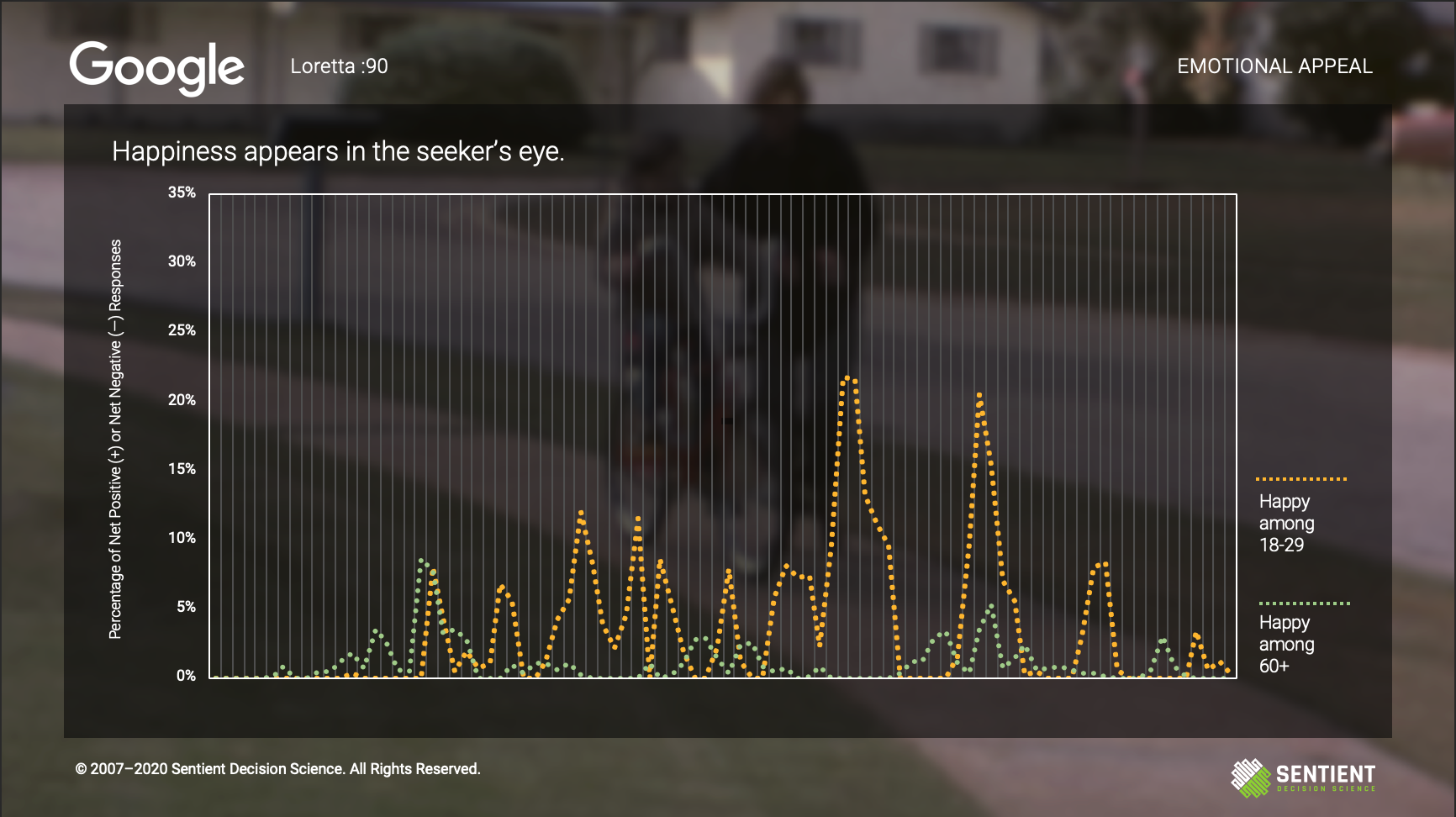Ok Google, show me a human truth.
Google’s “Loretta” will end up being one of the most emotionally engaging ads in 2020. The storytelling is so captivating and memorable that viewers sat glued to their screens, willfully letting waves of positive and negative emotions wash over them for a full minute and a half during the Super Bowl. Beyond its obvious engagement value, the ad also delivers a significant emotional lift for the Google brand.
A single exposure to “Loretta”, in its :90 format, increases implicit emotional appeal for the brand by more than 6 points overall. This is no small achievement for a brand as well established and ingrained in the non-conscious minds of consumers as Google.
The lift in implicit emotional appeal is the greatest among younger age groups, especially 18-29 year olds. We were curious why this ad would have such a strong impact within this group, so we dug into the emotional engagement data by crossing it with implicit impact on the brand to find out the why behind “Loretta’s” emotional resonance.
A mirror image: the anticipation and remembrance of lifelong love.
“Loretta” resonates emotionally, with stark contrasts in the emotional experience between age groups. The emotion expressed on the faces of viewer reveals a mirror image between the 18-29 year-old audience’s anticipation of creating lifelong love memories and the 60+ audience’s reflection on those memories.
When we compare expressed happiness between the two age groups, we see that the younger demographic is much more likely to express happiness when viewing the same life reflection scenes as the 60+ group.
Having this message come from Google was a pleasant surprise for most audiences. In addition to increasing overall appeal of the Google brand, exposure to “Loretta” increases associations of “Surprising” with Google, especially among younger age groups.
Ok Google, I’m surprised. Now, remember to explain that ad to me.
Even with all of these positive outcomes, the behavioral science data shows that while “Loretta” is full of surprises, they’re not all pleasant.
When an ad is this emotional, it may be easy to conclude “it’s a winner”. For fear of potentially ruining the magic of a spot, advertisers often move forward without seeing the need for additional edits. However, emotional engagement is only half of the story for advertising impact. While the spot does produce an overall lift in emotional appeal for the brand, it also increases associations of confusion with Google after exposure.
Analysis of expressed confusion on the faces of consumers during viewing of “Loretta” reveals that the older audience is confused during the first 30 seconds of the ad and the younger audience is confused during the final 30 seconds.
Incisive cut downs of this :90 spot should seek to minimize those moments of confusion in order to maximize the emotional impact of this creative work. To learn how to optimize cut downs of this ad, or your own ad, contact us info@sentientdecisionscience.com.
Ok Google, remember this blog post.
By: Aaron Reid
Founder & CEO, Sentient Decision Science, Inc.




